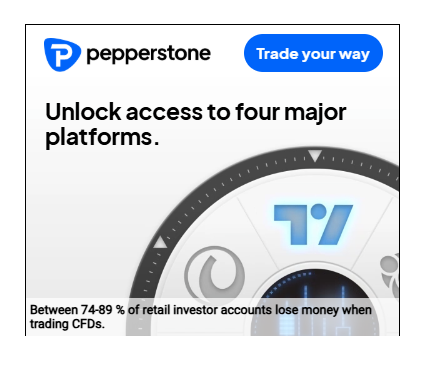
3 minute read
Pepperstone Spread Betting Account Spreads - How much?
from Pepperstone Account
by Jone Eva
Knowing the spread—the difference between the buy and sell price—is crucial for any spread bettor, as it represents your only cost. Pepperstone’s Spread Betting Account offers some of the most competitive spreads in the industry, across forex, indices, commodities, shares, and more. In this detailed guide, we’ll break down typical spreads, what influences them, and how you can get the best pricing.
Open your Pepperstone Spread Betting account now

What Are Spreads in Spread Betting?
When you place a spread bet, you bet an amount per point (or pip) of movement in the underlying market. The “spread” is the gap between the bid (sell) and ask (buy) prices. Your cost for entering and exiting the position equals:
Spread in points/pips × Your stake per point
No additional commission or fees apply—just the spread itself.
Typical Spreads on Key Markets
Forex Majors (e.g. EUR/USD, GBP/USD)
Typical spread: 0.6 pips during London–New York overlap
Cost at £5 per pip: 0.6 × £5 = £3 round‑turn
FTSE 100 Index
Typical spread: 1.0 point
Cost at £5 per point: 1.0 × £5 = £5 round‑turn
Gold (XAU/USD)
Typical spread: 0.3 points
Cost at £5 per point: 0.3 × £5 = £1.50 round‑turn
US500 (S&P 500)
Typical spread: 0.4 points
Cost at £5 per point: 0.4 × £5 = £2 round‑turn
Major Shares (e.g. Apple, Google)
Typical spread: 0.1 points
Cost at £5 per point: 0.1 × £5 = £0.50 round‑turn
Spreads may widen outside peak sessions or around major economic announcements.

Factors That Influence Spread Size
Market Liquidity
Tightest spreads occur during the London–New York overlap when volume peaks.
Volatility and News Events
Spreads can widen significantly around central bank decisions, employment reports, and geopolitical events.
Instrument Type
Major forex pairs and large-cap indices have the narrowest spreads; exotics, small-cap shares, and some commodities are wider.
Account Conditions
Pepperstone’s raw‑spread Razor Account (for CFD trading) yields similar spread levels; spread betting mirrors those competitive raw spreads.
How to Get the Best Spreads
Trade High‑Liquidity Hours: Focus on London and New York sessions.
Monitor Economic Calendar: Avoid placing large bets immediately before major news releases—or use guaranteed stop‑loss orders to lock in maximum spread.
Use Limit Orders: Where possible, place limit bets at your target price to avoid paying a widened market spread.
Why Pepperstone Spreads Stand Out
No Hidden Fees: All costs are built into the spread—no commissions, no platform or inactivity fees.
ECN/STP Execution: True market‑depth pricing with no dealing‑desk intervention ensures you get real‑time interbank spreads.
Consistent Transparency: Spreads displayed in platform match those you pay—no unexpected slippage beyond the spread.
Start spread betting with Pepperstone and lock in tight spreads today
Conclusion
Pepperstone’s Spread Betting Account offers industry‑leading spreads across all major markets—often as low as 0.6 pips on EUR/USD and 1.0 point on FTSE 100. By trading during high‑liquidity periods, watching for news events, and using limit or guaranteed stops, you can minimize your betting costs and maximize potential returns.
See more:
Which Pepperstone account is best for beginners?
Pepperstone Razor Account minimum deposit - How Much?
Pepperstone Razor Account Commission - How much?
Pepperstone Razor Account Fees - How much?
Pepperstone Razor Account Leverage - How much?

